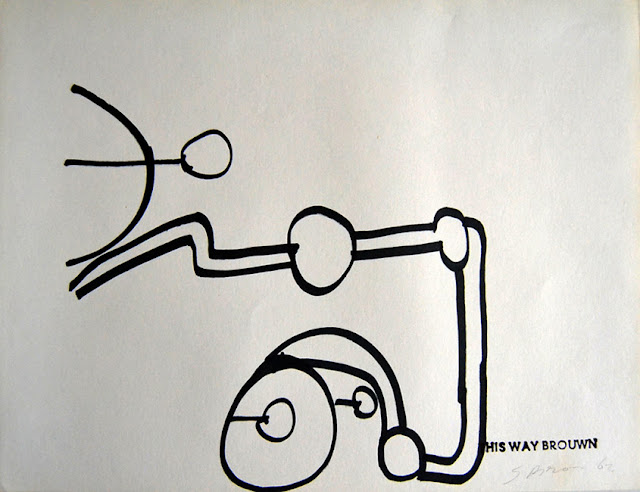I was in Whitstable
and I wanted to go for a walk and take a look at the house where Peter Cushing lived between 1959 and 1994 (the year of his death). Somebody should write a song about it.
The house looked unlived in, possibly even abandoned, though I don’t suppose it was. Houses this valuable don't get abandoned.
My hostess, Jacqueline, drew a map to help find the place. It looked like this (the perforated edge represents the beach):
I shall treasure that map. I love maps of all kinds, and I was reminded of Stanley Brouwn a Dutch artist who between 1960 and 1964 created a series of art works titled ‘This Way Brouwn.’ He wandered the streets of Amsterdam and stopped strangers and asked them to draw maps directing him to other parts of the city. These maps then became his art.
He also taped what the people said, and it appears somebody also took photographs – which must have disconcerted the people giving directions, I’d think.
And I was sent back to our old pal Michel De Certeau’s essay ‘Walking in the City’ which I always want to find more enjoyable and profound than I actually do. Still, it contains the notion of a theoretical city – the one found in maps and official documents, as opposed to the practiced map that people actually produce and/or carry around in their heads from their own experience.
‘Escaping the imaginary totalizations produced by the eye, the everyday has a certain strangeness that does not surface, or whose surface is only its upper limit, outlining itself against the visible. Within this ensemble, I shall try to locate the practices that are foreign to the "geometrical" Or "geographical" space of visual, panoptic, or theoretical constructions. These practices of space refer to a specific form of operations ("ways of operating"), to "another spatiality” (an "anthropological," poetic and mythic experience of space), and to an opaque and blind mobility characteristic of the bustling city. A migrational, or metaphorical, city thus slips into the clear text of the planned and readable city.”
Well, you’ve said a mouthful there, Michel. And is it just me, or does he look like John Shuttleworth in that picture?
And then by serendipity I came this fashion photograph by Louise Dahl-Wolfe:
and that got me thinking about the connections between maps and fashion (and to some extent walking). There are a surprising number of articles of clothing that feature maps.
But you wouldn’t want to use one to find your way in the readable city.












